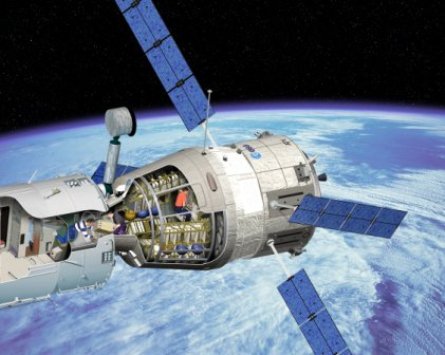A €300 million ($475 million) three-year Automated Transfer Vehicle (ATV) Advanced Return Vehicle (ARV) development project, to be proposed to the European Space Agency's November ministerial meeting, could become a stepping stone to a human transport system in 2020.
ESA wants to evolve its expendable 20,000kg (44,000lb) ATV, which docked with the International Space Station for the first time in April, into an EADS Astrium Ariane 5-launched ARV. That cargo vehicle would be the basis for the manned system operating around 2020. ESA will design ARV with a view to man-rating it in future. The cargo version will be about 5,000kg lighter than the Ariane 5's low-Earth orbit capability to allow for the future addition of a launch abort tower.
The ARV, with up to 1,500kg downmass capacity, would be operational by 2015. Its use assumes an extension of the International Space Station's lifespan beyond 2016, which the outpost's space agency partners said they wanted in their 17 July joint statement.
|
|---|
Above: ESA's Cargo Return Vehicle (CARV) concept developed under its study that began in 2004 |
ESA's head of the future transport and infrastructure division, Marco Caporicci, denies that a manned ARV is an alternative to CSTS: "We want to find synergies with CSTS. That is going straight to a crew system and flying on a Russian rocket. It has different requirements."
ARV will build on the 2004 "Larger Cargo Return Spacecraft" study and the same year's related Cargo Return Vehicle (CARV) project. That CARV was designed to be compatible with the space station's wider-diameter US docking port allowing larger items to be transferred, compared with ATV.
Caporicci says he hopes ARV synergies can also be found in forthcoming Ariane 5 improvement work, while the ARV missions will act as test flights for the man-rated system. The ARV project will also consider abort modes as an Ariane 5 launch from Kourou could see the descending capsule pass over western and central Europe.
Source: Flight International























